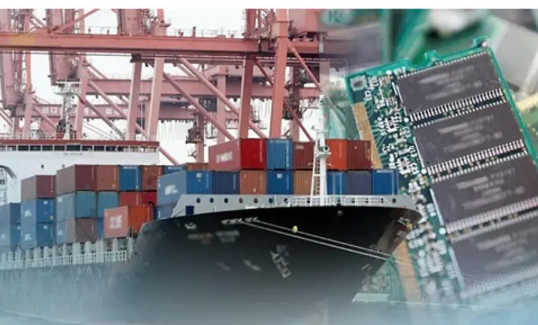
For the fourth consecutive month, semiconductor exports have shown double-digit growth rates, leading the charge in exports. With increases in exports across various components such as displays and computer/peripheral devices, the Information and Communication Technology (ICT) sector as a whole is showing clear signs of recovery.
According to the February ICT Export and Import Trends report released by the Ministry of Industry, Trade and Resources on March 14, ICT exports amounted to US$16.53 billion, while imports stood at US$10.29 billion, resulting in a trade surplus of US$6.25 billion.
Semiconductor exports, which drove the overall export growth, increased by 62.9% to US$9.96 billion compared to the same month last year.
The growth in the semiconductor market, driven by the expanding artificial intelligence (AI) sector, has significantly contributed to the increase in semiconductor demand. Memory semiconductors recorded exports of US$6.08 billion, marking a 108.1% increase during the same period. This growth is attributed to the rebound in fixed transaction prices of DRAM and NAND flash, along with increased demand for high-value-added items such as HBM.
System semiconductor exports grew by 27.2% to US$3.42 billion, benefiting from expanded AI investments and a recovery in semiconductor market conditions. This marks the second consecutive month of growth after a 13-month period of increase.
Exports in the display and computer/peripheral devices sector also saw increases of 18.7% and 14%, respectively. Display exports recorded US$1.55 billion, driven by the recovery in demand for IT front-end devices, with both OLED and Liquid Crystal Display (LCD) exports for TVs and mobile phones on the rise.
Notably, the adoption of OLED in the overall display market is increasing, showing an upward trend in market share. While LCD is witnessing price improvements for large panels used in TVs, the prices for laptop and monitor panels remain stable.
Despite the release of the Galaxy S24 boosting finished product exports, total mobile phone exports decreased due to a slump in component demand from overseas companies. Finished product exports were US$270 million, up 55.1% from the same month last year, with exports to the European Union spiking by 152.8% to US$110 million. However, component exports fell by 36.9% to US$540 million, largely due to a 51% decrease in China, where many major companies’ smartphone production bases are located.
Secondary battery exports to China (US$60 million) and Japan (US$50 million) increased by 100.1% and 51.4%, respectively, compared to the same month last year. However, exports to the European Union and the United States saw significant decreases, with EU exports dropping by 54.7% to US$100 million and U.S. exports decreasing by 22% to US$310 million.
By region, China, including Hong Kong, was the largest destination for ICT exports, with shipments to China increasing by 80.6% to US$5.84 billion compared to the same period last year. This was followed by exports to Vietnam (US$1.28 billion), the United States (US$560 million), and the European Union (US$230 million).




